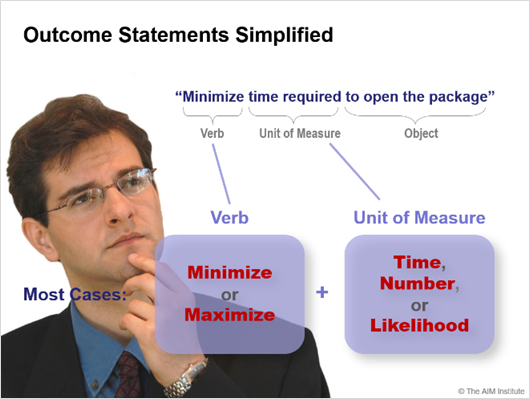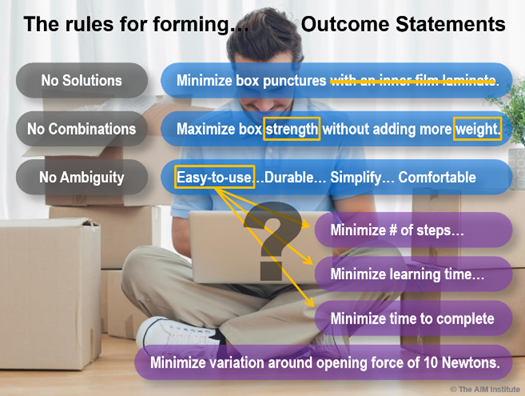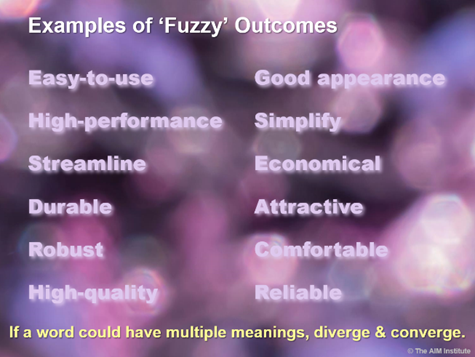In your What-Why-Clarify probing, you "clarify" by asking the customer's help in creating an Outcome Statement.
An Outcome Statement takes this form: Verb – Unit of Measure – Object. Example: “Minimize time required to open the package." In our work, we’ve found the verb can almost always be “minimize” or “maximize.”
Other verbs, such as “prevent” or “ensure” are also fine. But when you’re creating outcome statements under the direction of the customer, it helps to see if there is something to minimize or maximize. You’ll find that the unit of measure can be time, number or likelihood in many cases.

Optimizing your outcome statements
The key to highly effective Everyday VOC is to clarify the customer's needs with an Outcome Statement at the end of your probing on each problem or "outcome." Here are some “rules” to create the best possible Outcome Statements:

No Solutions: Don’t say, “Minimize box punctures with an inner film laminate.” Rather, your Outcome Statement should simply be, “Minimize box punctures.”
No Combinations: Don’t combine two separate outcomes... like strength and lower weight. It's better to enter each of these as separate outcome statements.
No Ambiguity: Words and phrases like easy-to-use, durable, simplify, and comfortable are what we call “fuzzy outcomes.” They could mean different things to different people.

So what do you do when you hear a fuzzy word? Let’s say the customer said, “We’d like the box to be easy to open.” First you diverge to understand all their possible meanings. You might hear…
- Require fewer steps to open
- Require no tools to open
- Require less time to open
- Require less physical force to open
After you’ve diverged to all their possible meanings, you converge by asking, “Which of these is the most important to you?” The customer might say, “physical force.” Then you’d ask them if this outcome is appropriate: “Minimize physical effort needed to open the box.”
Why go to all this bother with outcome statements? Two reasons. First, this level of disciplined thinking helps your customer clarify what he or she really wants. Second, when you enter well-crafted outcome statements in your CRM, it will be MUCH easier for your marketing or product management staff to conduct intelligent data mining in the future.
For more on this topic, see e-Learning Module 5: Uncover Customer Outcomes in the SalesPrepTM system, which is offered as part of our Everyday VOC® training.
Keywords: outcome statement, fuzzy words, clarify, minimize, maximize, verb, unit of measure, object, SalesPrep, Everyday VOC training
